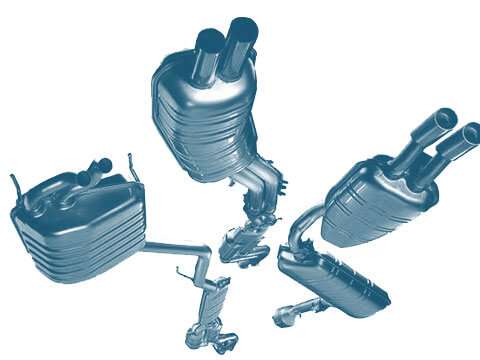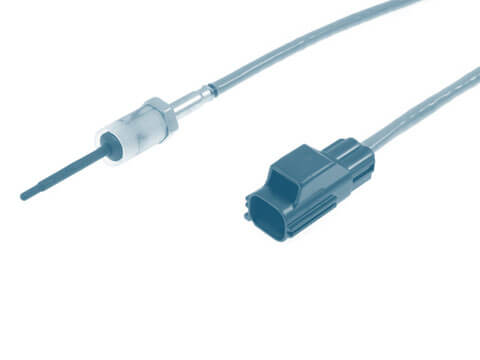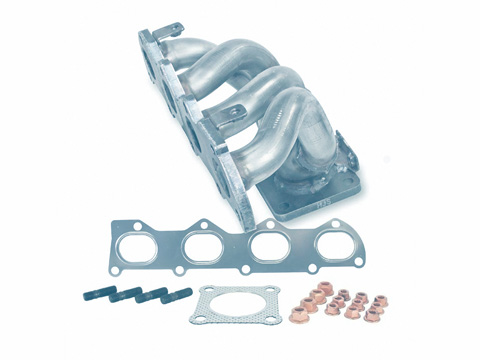Euro 6 emission standard
The Euro 6 emission standard is a directive that defines which and how many pollutants a new car is allowed to emit in order to be registered in the European Union. It is an evolution of the previous Euro standards and sets strict limits for various pollutants produced by internal combustion engines.
Development and background
The European Union (EU) Euro pollutant standards were first introduced in the 1990s to address rising emissions of nitrogen oxides (NOx), carbon monoxide (CO), hydrocarbons (HC) and particulates from internal combustion engines. With each new Euro standard, the limits for these pollutants have been gradually reduced to minimise the environmental impact of vehicles.
Features of the Euro 6 emission standard
The Euro 6 standard, which became mandatory for new vehicles in September 2014, sets strict emission limits:
- Nitrogen oxides (NOx): The limit values for nitrogen oxides have been significantly reduced compared to the Euro 5 standard. This is particularly important because nitrogen oxides contribute to the formation of ground-level ozone and particulate matter and can have adverse health effects.
- Particle count: For the first time, the Euro 6 standard includes a limit on the particle count per kilometre for petrol engines in order to further reduce particulate emissions.
- Particulate matter: The particulate matter limits for diesel cars have also been tightened significantly to reduce emissions of harmful soot particles.
- Carbon monoxide (CO), hydrocarbons (HC) and ammonia (NH3): The Euro 6 standard also sets strict emission limits for these pollutants in order to minimise the overall emissions of motor vehicles.
Technological adaptations
Significant technological innovation needed to occur in the automotive industry in order to comply with the Euro 6 standard. Vehicle manufacturers and automotive suppliers developed exhaust aftertreatment systems such as selective catalytic reduction (SCR) and diesel particulate filters (DPF) and integrated them into new cars in order to meet the required emission limits.
Environmental impact and progress
The introduction of the Euro 6 pollutant standard has led to a significant reduction in pollutant emissions from vehicles. Nevertheless, discussions have taken place over time about whether the actual emissions of vehicles in real-world driving situations accurately reflect the official test bench tests. This has led to the introduction of more stringent test procedures, such as the Real Driving Emissions (RDE) test, to ensure that emissions remain within the limits in real-world road traffic situations.
Euro 6d
The Euro 6d emission standard was introduced in various stages. Among other things, it stipulates that the vehicles’ exhaust gas purification systems must be tested under real environmental conditions during additional road tests, known as RDE tests.
Euro 6d-ISC-FCM
Since 1 January 2021, all newly registered passenger cars must comply with the Euro 6d-ISC-FCM emission standard.
The abbreviation ISC stands for “In-Service-Conformity-Tests”. This means that the vehicle manufacturer must prove in random tests that passenger cars already on the road also comply with the legal requirements.
The abbreviation FCM stands for “Fuel Consumption Monitoring System” and describes a system that stores the real-world fuel/energy consumption over the entire driving operation in the Euro 6d passenger car. These values can be read out and evaluated via the diagnostic interface. This way, the values stated by the manufacturer can be compared with the real consumption.
Euro 6e
The Euro 6e emission standard will be introduced in three stages and is considered a transitional stage for the planned Euro 7 standard. It further tightens the test requirements.
Pollutant class and environmental sticker
Attention: The number on the environmental sticker, which is affixed to the bottom right of the windscreen on passenger cars, does not correspond to the pollutant class. The number on the environmental sticker only refers to the pollutant group of the environmental zones – and not to the pollutant class of the vehicle.
There are four different groups:
Group 1 (no sticker): Vehicles that only have the Euro 1 emission standard or worse are not issued with an environmental sticker.
Group 2 (red sticker): This only applies to vehicles with a diesel engine. Diesel vehicles with the Euro 2 standard (or Euro 1 with particulate filter) are issued with a red environmental sticker. Cars with a red sticker are banned from driving in almost all low emission zones.
Group 3 (yellow sticker): Diesel cars with the Euro 3 emission standard (or Euro 2 with particulate filter) are issued with a yellow environmental sticker.
Group 4 (green sticker): Vehicles with the emission standards Euro 4, Euro 3 with particulate filter, Euro 5 and Euro 6 are issued with a green environmental sticker.
Pollutant classes for electric passenger cars
Pollutant classes are not applied to electric vehicles as they do not emit any relevant pollutants such as carbon monoxide. Therefore, the Euro emission standards are not relevant to them. In contrast, vehicles with a hybrid drive must meet the Euro emission standard. Most hybrid cars fall into the Euro 5 or 6 pollutant classes and usually have low emissions.





